

Display No. 3G
BLOWN, Ernest James
Ernest ‘Chopper’ Blown joined the Royal Navy in September 1932 as a Sick Berth Attendant. After his first year of training and serving in the Royal Naval Hospital at HMS Pembroke, he changed branches and became an Officer’s Cook. As a Cook he served primarily in shore establishments including in HM Ships Ganges, and Greenwich. He also spent several years on board HMS Frobisher which travelled all over the world to places such as Copenhagen, Jamaica, Malta, Helsinki, Venice, and Port Said.
At the outbreak of the Second World War, he was serving in HMS Sheffield as a Petty Officer Cook (O). At this time Sheffield was operating in the North Sea and English Channel and was involved in the bombardment of Genoa, the sinking of the Bismark, Russian convoy work, and on the Norwegian campaign. After Sheffield was damaged by a mine in 1942, Blown transferred to the Regulating Branch (Naval Police) in HMS Pembroke. For the remainder of the war he served as a Regulating Petty Officer in various ships and shore establishments including HMS Sphinx in Egypt, and HMS Arethusa in the Mediterranean. While serving in Arethusa he was promoted to Master at Arms.
After the war Blown served in numerous shore establishments throughout the United Kingdom. In 1948 he undertook an exchange to the Malayan Naval Forces based in Singapore for three years. In the early 1950s, Blown served in Kenya during the Mau Mau Uprising. He retired from the Royal Navy in September 1954 after twenty two years of service.
Awarded medal(s)
Medal Description [Left to Right]:
The Naval General Service Medal 1915-1962
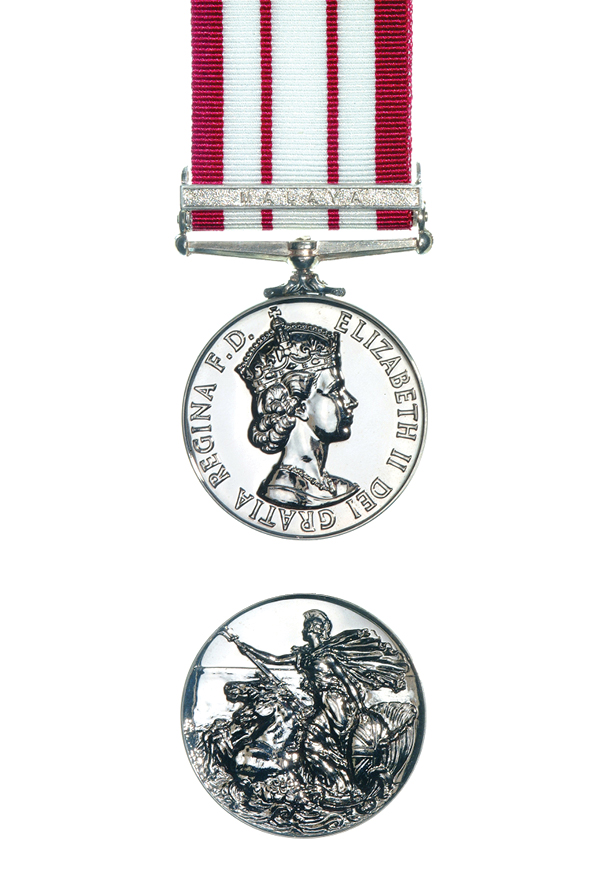
The Naval General Service Medal (NGSM) 1915-1962, was instituted in 1915 to recognise service in minor naval operations for which no separate medal was intended. They were always issued with a clasp for the specific area of operation. A total of seventeen clasps were awarded. Examples in our collection include the ‘Persian Gulf 1909-14’ clasp for operations against gun-runners; the ‘Palestine 1936-39’ and ‘Palestine 1945-48’ clasps which were issued for service in the pre-war Arab uprising and post-war Jewish insurgency; the ‘Minesweeping 1945-51’ clasp which was awarded for six months minesweeping service afloat; the ‘Malaya’ clasp recognising the service of naval personnel, including the Royal New Zealand Navy, during the Malayan Emergency of 1948-1960; and the ‘Yangtze 1949’ clasp for those on HMS Amethyst and other vessels attacked by Communist Chinese forces.
The 1939-1945 Star
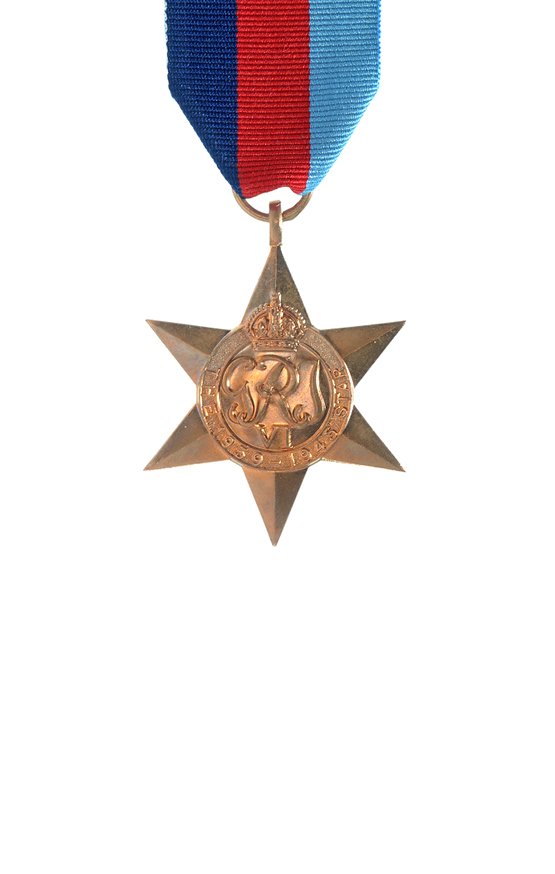
The 1939-45 Star is the first in a series of eight campaign stars instituted in 1945 to recognise service in World War Two. The ribbon has three equal vertical stripes of dark blue, red and light blue. The dark blue stripe symbolises the service of the Navy and the Merchant Navy, the red stripe symbolises the service of the Army, and the light blue stripe symbolises the service of the Air Force. The equal width bands represent the equal contributions of the three service arms towards victory. The ribbon was devised by King George VI. Two clasps could be awarded with this medal: ‘Battle of Britain’ and ‘Bomber Command’. Only aircrew would qualify for these clasps although a small number of Fleet Air Arm naval pilots flew for the air force and would be eligible for the ‘Battle of Britain’ clasp.
The Atlantic Star
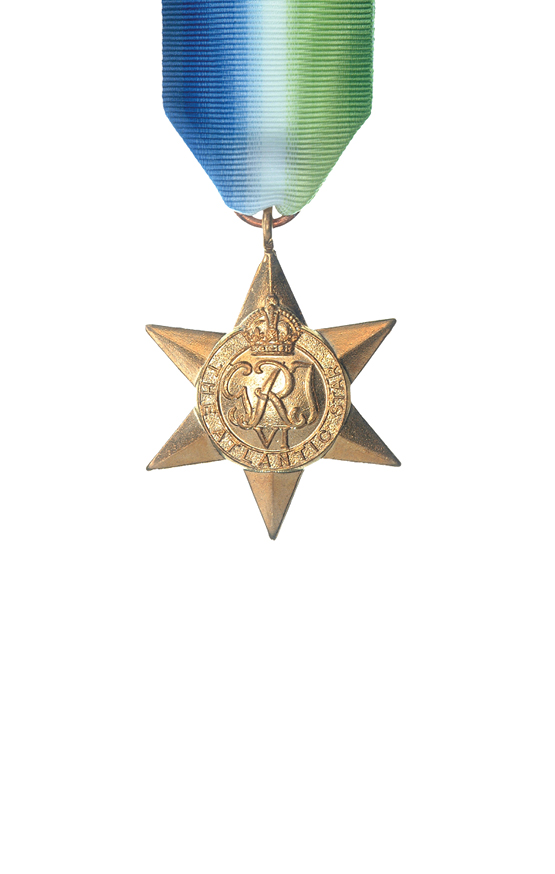
The Atlantic Star was awarded for service during the Second World War. It was instituted to commemorate the Battle of the Atlantic the longest continuous military campaign in the Second World War running from 3 September, 1939 – 8 May, 1945. Six months naval service or four months air service in the Atlantic, United Kingdom (‘home’) waters or North Russian waters was normally required. The ribbon is watered silk coloured blue, white and green, symbolising service in the oceans. Two clasps could be awarded with this medal: ‘France and Germany’ and ‘Air Crew Europe’. Personnel issued the Atlantic Star who then qualified for either the France and Germany and the Air Crew Europe Stars were awarded a clasp in respect of the second only (as only one clasp could be worn on the star).
The Africa Star
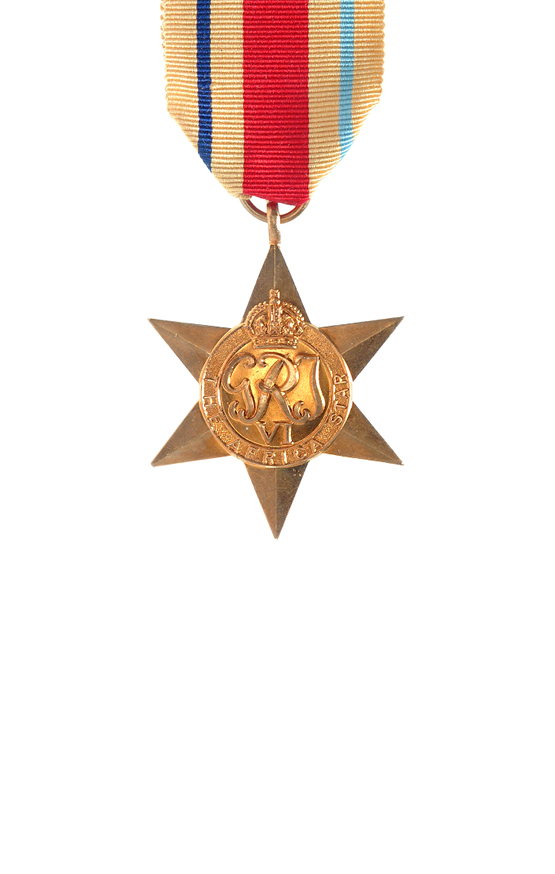
The Africa Star was awarded in the Second World War for service in North Africa between 10 June 1940 and 12 May 1943. The ribbon is pale buff in colour, with a central vertical red stripe, and narrower stripes, one dark blue and the other light blue. The pale buff background symbolises the desert, the central red stripe symbolises the Army, the dark blue stripe symbolises the Navy and Merchant Navy, and the light blue stripe symbolises the Air Force. Three clasps could be awarded with this medal: ‘North Africa 1942-43’, ‘8th Army’, and ‘1st Army’. Naval personnel could only qualify for the ‘North Africa 1942-43’ clasp – for in shore service.
The Italy Star
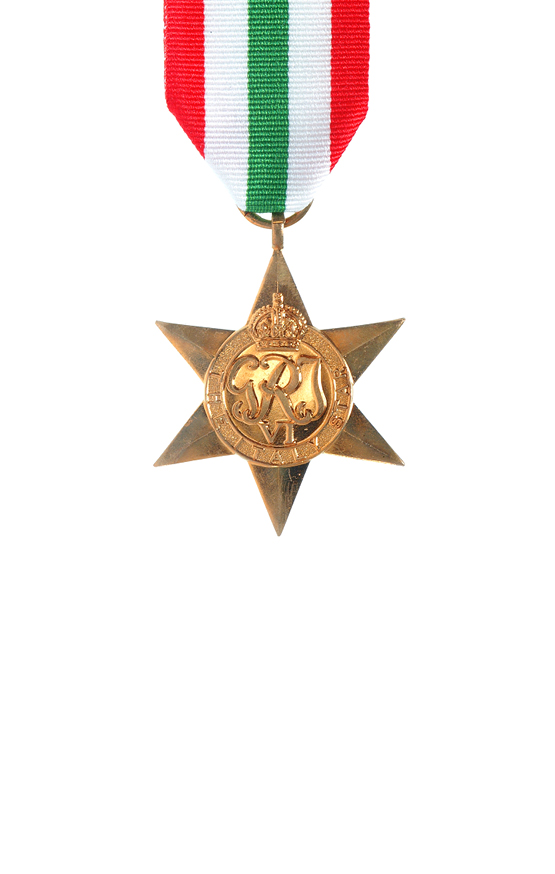
The Italy Star was awarded for operational service in Italy and adjacent countries in the Second World War between 11 June 1943 and 8 May 1945. No clasps were awarded. The ribbon uses the national colours of Italy; red, white and green as seen on the flag.
The Defence Medal
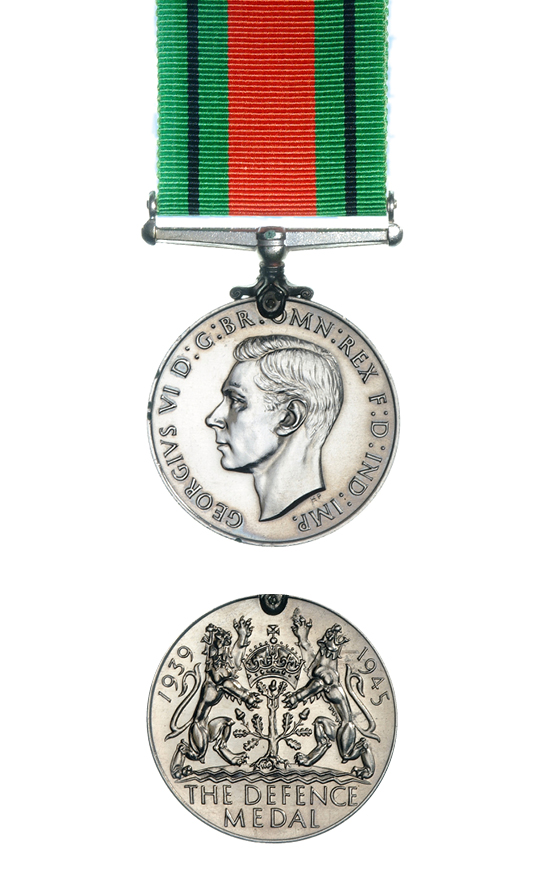
The Defence Medal was awarded to British and Commonwealth forces who served during the Second World War. It was awarded to New Zealand military personnel who served overseas in a non-operational area such as Great Britain, Palestine or Fiji. The ribbon’s flame-coloured orange centre band and green edge bands symbolise enemy attacks on Britain’s green and pleasant land. The narrow black stripes represent the black-outs against enemy air-attacks.
The War Medal 1939-1945
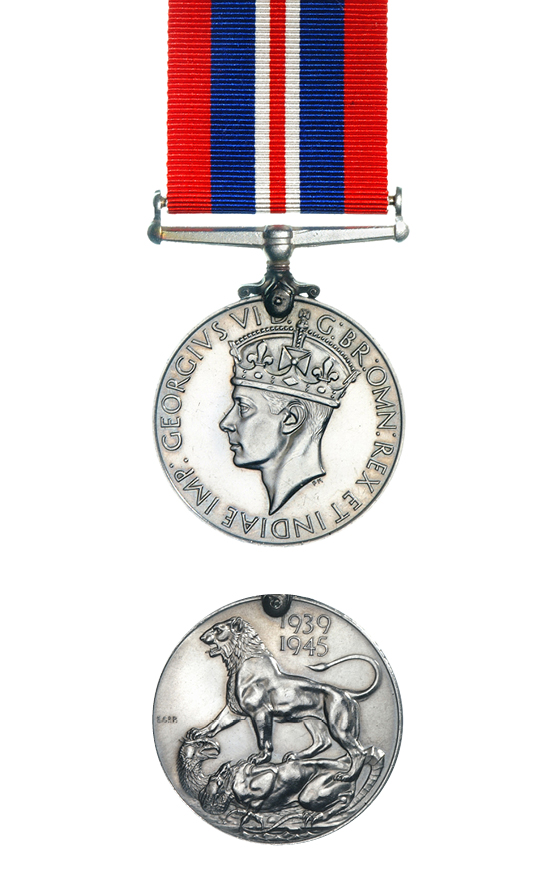
The War Medal 1939-45 was awarded across the British Commonwealth to all full-time members of the Armed Forces in the Second World War for 28 days service between 3 September 1939 and 2 September 1945, irrespective of where they were serving. The ribbon is the red, white, and blue of the (British) Union Flag. There is a narrow central red stripe with a narrow white stripe on either side. There are broad red stripes at either edge, the two intervening stripes being blue.
A bronze oak leaf on the medal ribbon denotes that the recipient was Mentioned in Despatches. To be Mentioned in Despatches a member of the armed forces had their name mentioned in an official report, written by a superior officer, and sent to a higher command. The report would describe the individual’s gallant or meritorious action in the face of the enemy.
Africa General Service Medal
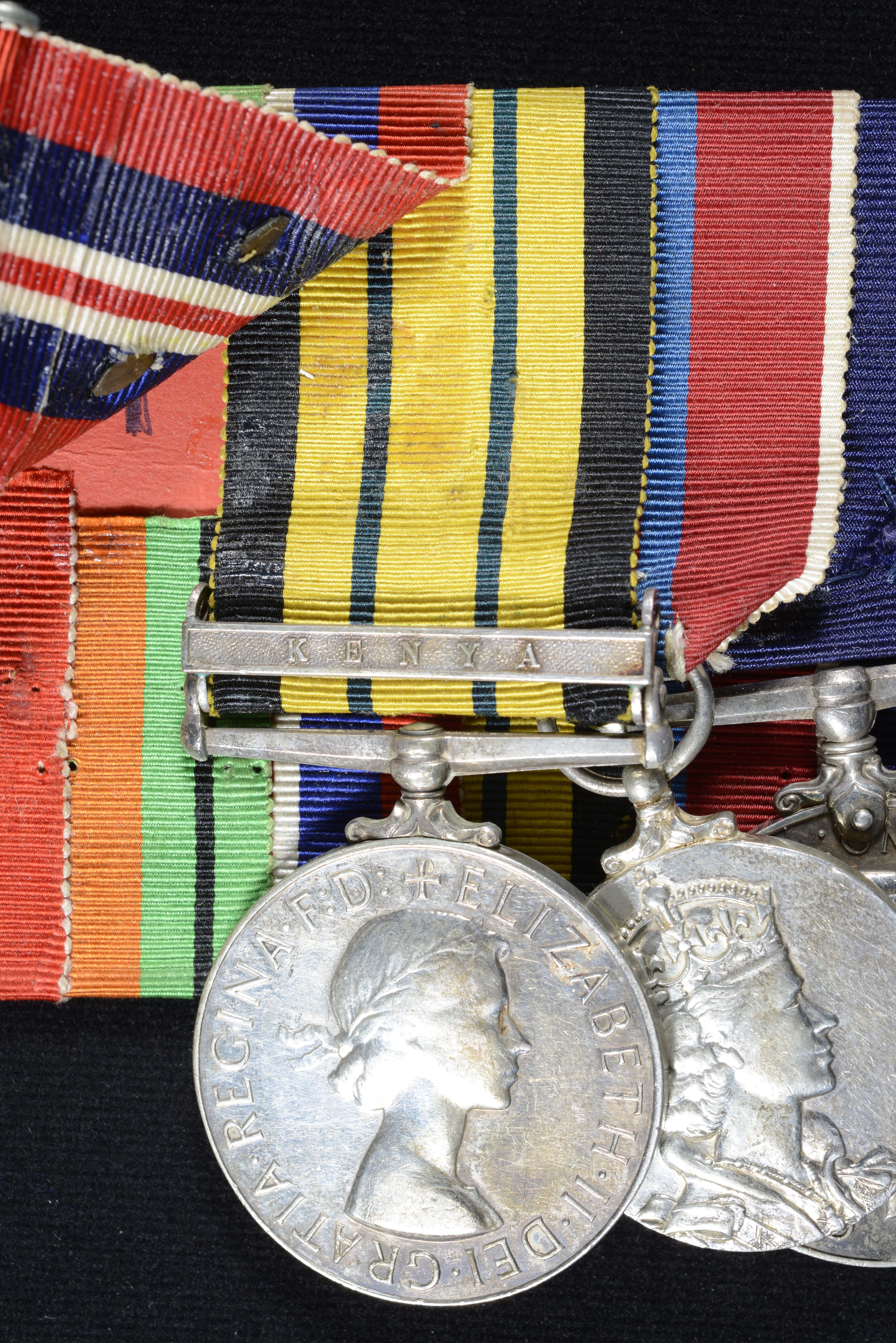
A campaign medal it was awarded for participation in minor campaigns that took place in tropical Africa between 1900 and 1956. A total of 45 clasps were issued. The medal was never seen without a clasp. The medal ribbon is yellow with black edges and two narrow green stripes towards the centre. The Kenya clasp was awarded to those who had completed a minimum of 90 days service between 21 October, 1952 and 17 November, 1956 during the Mau Uprising by the Kikuyu people. The medal with the Kenya clasp is shown in the middle of the attached image.
Coronation Medal 1953

This medal was issued to celebrate the coronation of Queen Elizabeth II in 1953. It was awarded to citizens of the British Commonwealth both military and civilian. Only 37 medals were issued with the names of the recipients engraved on them. These were awarded to the members of the British expedition which had reached the summit of Mount Everest on the morning of the Coronation ceremony. New Zealander, Sir Edmund Hillary, one of the two climbers who conquered the mountain, was knighted and received the Coronation Medal from the new Queen at Buckingham Palace several weeks later.
Royal Naval Long Service and Good Conduct Medal
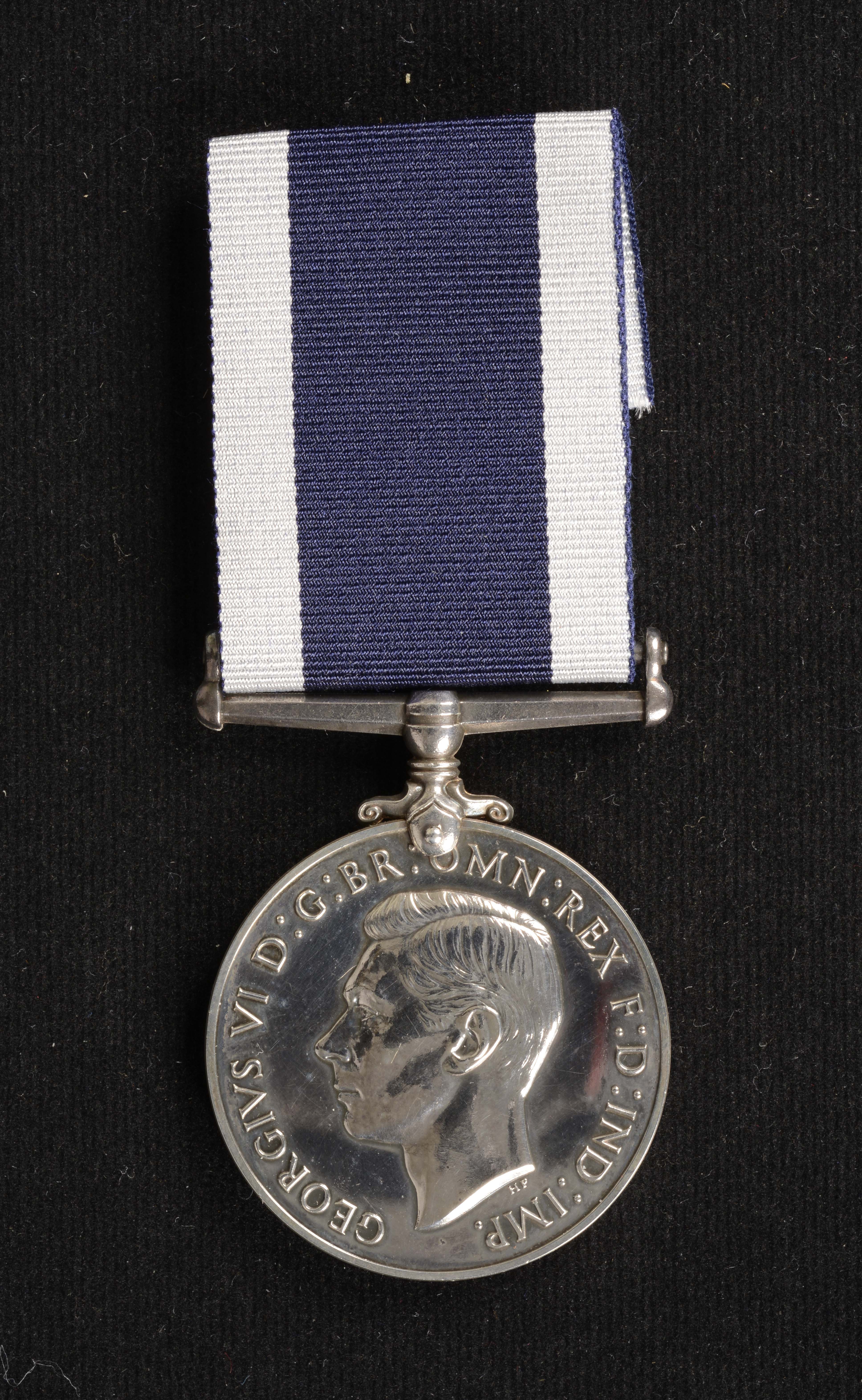
Awarded to ratings who have served a minimum of 15 years in the Royal Navy (previously 21 or 10 years), the first version of this medal was instituted in 1831 and it is still issued to Royal Navy personnel today. It features the reigning monarch’s head on the obverse and HMS Victory on the reverse with the recipient’s details engraved or impressed on the edge of the medal. This medal was also issued to eligible personnel serving in the New Zealand Division of the Royal Navy from 1921-1941 and then to Royal New Zealand Navy personnel from 1941-1981. In 1985 a New Zealand Royal Navy Long Service and Good Conduct Medal was introduced bearing the exact same design.
Soviet 40th Anniversary Medal

This medal was issued by the Russian (Soviet) government in 1985 to commemorate victory over Nazi Germany in 1945. Although primarily awarded to Russian citizens, it was also awarded to Commonwealth veterans (including Merchant Navy) who took part in the Arctic Convoys delivering essential supplies to the Soviet Union during the Second World War. For this reason it is sometimes referred to as the Russian Convoy medal.

